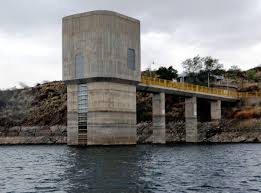
Understanding Weather – not predicting – 12 July 2012
What happened?
The previous weekend saw the development, arrival and departure of a well-marked and intense vortex; extending throughout the troposphere rather than being limited to just the lower levels. This depth and intensity ensured a considerable effect of air flows from north to south and back to north. This brought in very cold air from the polar region causing a very cold weekend. It was only by midweek that temperatures picked up but by Thursday evening, the effect of the next cold front could be felt.
This pattern has reverberated, consistently, around the hemispheres quite remarkably. Perhaps with a measure of relief, the full effects which can be created by such synoptic patterns have been deflected, one way or the other, from our skies. Our experience was limited to colder days while the weather pattern passed overhead and moved away eastward.
Cold in winter need some definition. A totality would imply low overnight temperatures, freezing measures to be widely experienced for a few hours, backed up by a chill daytime breeze keeping the sun’s warmth limited to the lower teens. Some modification allows daytime temperatures to reach the upper teens or even the lower twenties.
Our latitudes do provide a reasonable daytime altitude of the midday sun. Dry air will limit cloud development, hence sun heat should be at its most potent. There is another fact: Namibia is a large country, the north to south range takes us from the fringes of the tropics to the edges of the temperate zone; regarding temperatures there are three distinct zones.
This last week evidenced this yet again. While the south, Mariental to the Orange, shivered for 3 days, the middle latitudes from Grootfontein south endured 3 cold nights but with mild days while the northern latitudes experienced a colder night but warm days. Yet across the eastern section, the easterly wind brought some cloud patches. The coast is yet another Namibia, cold easterly winds become oppressively hot as the airflow descends the escarpment and what is labelled adiabatic warming occurs. Such airflows are turbulent enough to cause significant sand storms.
The cold front saw enough undercutting to form shower cloud close to its axis and typical winter showers were recorded. This undercutting, creating a vortex cut-off from the parent, has the potential of local, heavy falls even by summer standards: Aus’ reported local heavy falls This all across a matter of these few days.
What’s coming?
Friday again sees the arrival of a new vortex which intensifies rapidly as it enters and crosses the sub-continent. This development seems likely to miss our air space, but the cold onslaught (originating from the polar region) behind it is driven northward during Friday extending far to the north by Saturday with. two frosty nights expected. A strong high pressure system in the Atlantic drives the cold air like a circular conveyor from the polar region northward across the southern third of the continent.
The deepening vortex and its cut-off core depart quickly with easterly airflows returning countrywide by Monday. Warmer conditions will last across the week.
Coastal easterlies will be short in duration with limited potential for “oosweer”.












































